Introduction
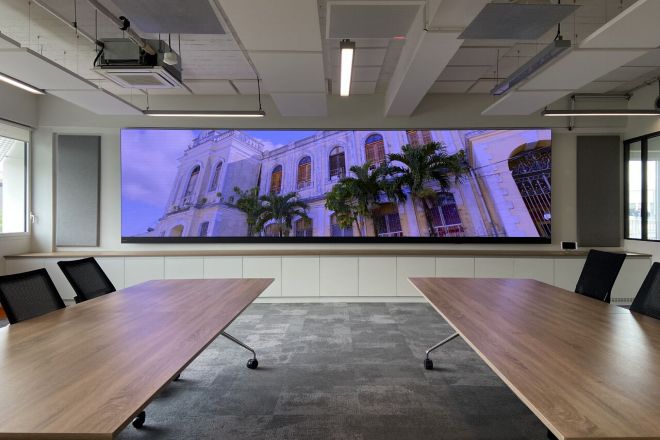
Stepping into the torrent of the digital age, LED displays are like bright stars, illuminating our vision, but they are also accompanied by some fog and misunderstandings.
Have you ever wondered whether those giant screen advertisements shining in the night sky really consume as much power as the rumored “power tiger”? Or is the picture quality of LED really not comparable to that of high-end TV screens?
This article is a journey of demystification. We will directly hit the five common misunderstandings about LED displays, use facts and data to clear the fog for you, and give you a new understanding of this technology.
Follow our footsteps, let us unveil the mystery of LED displays together, and explore how it brings unprecedented visual feasts and unlimited possibilities to our lives with its extraordinary performance and wide application. Are you ready? Let’s set off together and start this double feast of knowledge and vision!
Misunderstanding 1: LED displays consume a lot of power and are not environmentally friendly
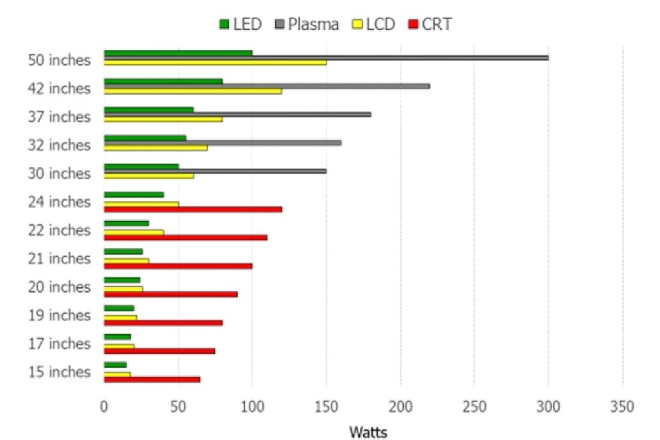
1). Explanation of misunderstanding
There is a misunderstanding in society that LED displays must be high-energy-consuming products due to their high brightness and large-area display characteristics, which are not conducive to environmental protection.
This concept may be due to a lack of understanding of the characteristics of LED technology and its energy efficiency.
2). The truth
2.1). The energy-saving principle of LED (light-emitting diode) technology:
- Low operating voltage:
LED is a semiconductor device that can directly convert electrical energy into light energy.
Its operating voltage is much lower than that of traditional lighting equipment such as incandescent lamps or fluorescent lamps, which means that at the same brightness, LED consumes less electrical energy.
- High luminous efficiency:
The luminous efficiency (i.e., luminous efficiency) of LED is much higher than that of traditional light sources.
The luminous efficiency of modern LED display screens has reached or exceeded 100 lumens/watt, which means that LED consumes less electrical energy when producing the same luminous flux.
- Adjustable brightness:
LED display screens usually have a brightness adjustment function, which can adjust the brightness according to ambient light or actual needs, further saving energy.
For example, at night or in a dimly lit indoor environment, the brightness of the LED display screen can be appropriately reduced to reduce energy consumption.
2.2). Data support
According to multiple studies and actual application cases, LED display screens perform well in terms of energy consumption. For example, compared with traditional projection technology, LED display screens can reduce energy consumption by 30%-50% at the same brightness.
Compared with traditional flat panel display technologies such as LCD (liquid crystal display) and PDP (plasma display), the energy consumption advantage of LED display screens is more obvious, especially in large-size and high-resolution application scenarios.
3). Environmental advantages of LED display screens
Recyclability: The main materials of LED display screens include LED chips, circuit boards, shells, etc., most of which have good recyclability. With the improvement of environmental awareness and the advancement of recycling technology, the disposal of LED display screens will be more environmentally friendly and sustainable.
Mercury-free and lead-free design: LED light sources do not contain harmful substances such as mercury and lead, which reduces the potential harm to the environment and human body during production and use. In contrast, traditional lighting equipment such as fluorescent lamps often contain these harmful substances.
Reduce greenhouse gas emissions: Because LED display screens have significant energy-saving advantages, they can significantly reduce energy consumption and greenhouse gas emissions during use. This is of great significance for alleviating global warming, achieving a low-carbon economy and sustainable development.
Misunderstanding 2: LED display screens have low resolution and poor picture quality
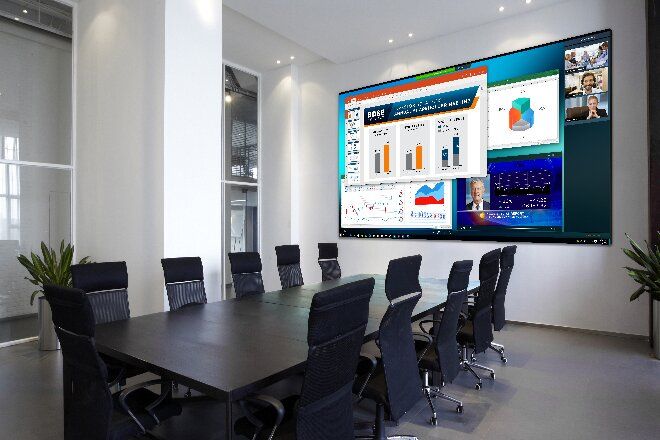
1). Misunderstanding explanation
Some people believe that due to the relatively large pixel pitch of LED display screens, especially in traditional large-screen applications, it is difficult to achieve high-definition or even ultra-high-definition display effects, and thus believe that its picture quality is poor.
2). Technical analysis
2.1). Small pitch LED and Micro LED technology:
With the continuous advancement of technology, the LED display industry has introduced a variety of new technologies to deal with the problems of large pixel pitch and low resolution.
Among them, small-pitch LED (such as P2, P1.5, etc.) and Micro LED technology are particularly eye-catching. These technologies achieve higher resolution and finer display effects by greatly reducing the package size and pixel pitch of LED chips.
The pixel pitch of small-pitch LED can reach the millimeter level or even the sub-millimeter level, while Micro LED pushes the pixel pitch to the micron level, making ultra-high-definition display possible.
3). Application examples
- High-end conferences:
In high-end business conferences, high-resolution LED displays are widely used in scenes such as background walls and main screens to display clear PPT, video, and other content and enhance the professionalism and viewing of the conference.
- Movie screenings:
With the maturity of technology, LED displays have also begun to enter the field of movie screenings. High-resolution LED movie screens can provide more delicate and realistic picture effects, bringing an immersive viewing experience to the audience.
- Virtual reality:
In emerging fields such as virtual reality (VR) and augmented reality (AR), high-resolution LED displays also play an important role. They can simulate more realistic and three-dimensional environmental scenes, providing users with a more immersive experience.
4). Improved image quality
- Color management:
Advanced color management technology can ensure that LED displays present more accurate and vivid colors. Through fine color calibration and color restoration algorithms, the color performance of LED displays can be closer to the real colors under natural light.
- Grayscale control:
Grayscale control is one of the key technologies to improve the image quality of LED displays. By optimizing the grayscale processing algorithm and enhancing the grayscale level, the LED display can be more delicate and uniform when displaying low-brightness images, reducing graininess and noise.
Misunderstanding 3: LED displays are easily affected by environmental factors and have poor stability
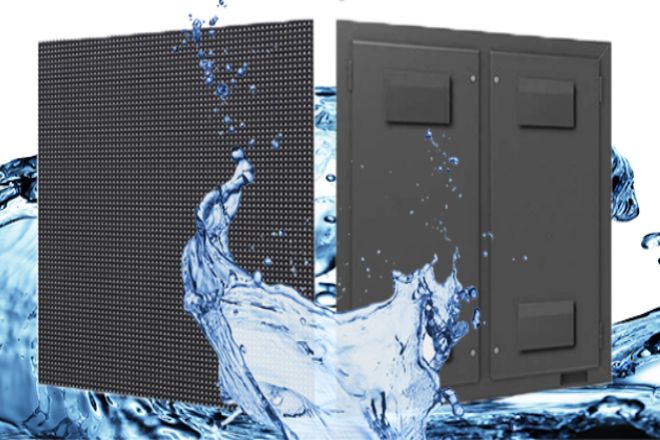
1). Misunderstanding explanation
There is a concern in society that the performance and stability of outdoor LED displays will be seriously affected when facing severe weather conditions such as high temperature, low temperature, humidity, and strong wind, and even prone to failure.
2). Protection technology
In order to cope with various harsh environmental challenges, the LED display industry has developed a series of efficient protection measures:
Waterproof and dustproof: By adopting special sealing structures and materials, ensure that the interior of the display will not be invaded by external factors such as rain and dust. This design not only protects the circuits and components of the display, but also extends its service life.
Ultraviolet protection: Applying anti-ultraviolet coating or using special materials on the surface of the display can effectively block the damage of ultraviolet rays to the display and maintain the vividness of the color and the stability of brightness.
Corrosion resistance: For displays used in highly corrosive environments such as the seaside and chemical plants, corrosion-resistant materials and coatings are used to prevent rust on metal parts and corrosion of circuit boards.
High protection level: Protection level standards such as IP65 and IP67 represent the display’s ability to protect against solid foreign matter and water. These high-protection-level displays can operate stably in harsh outdoor environments.
3). Intelligent adjustment
In addition to physical protection measures, modern LED displays are also equipped with intelligent adjustment systems to further adapt to different environmental conditions:
Intelligent temperature control system: Through built-in temperature sensors and heat dissipation devices such as fans and heat sinks, the temperature inside the display is monitored and adjusted in real-time to ensure that it will not be damaged by overheating in a high-temperature environment.
Automatic brightness adjustment: Automatically adjust the brightness of the display according to changes in ambient light, which not only ensures the display effect, but also avoids excessive power consumption in strong light and glare in weak light.
Misunderstanding 4: LED display screens are expensive to maintain and difficult to replace
1). Maintenance cost of LED display
- Equipment cost and modular design
LED display screens are usually composed of multiple modules. This modular design allows only the faulty module to be replaced instead of the entire display screen when a single module fails, which greatly reduces maintenance costs.
In addition, with the continuous development of LED technology, the price of LED display screens has gradually decreased, further reducing equipment costs.
- Maintenance cost
Regular maintenance is the key to ensuring the normal operation of LED display screens. This includes cleaning the surface of the display screen, checking the connection lines, replacing aging parts, etc. Although these tasks will incur certain costs, these maintenance costs are relatively low compared to the cost of replacing the entire display screen.
In some high-end application scenarios, remote monitoring and fault diagnosis systems can also be used to monitor the operating status of the display screen in real time, discover and solve problems in a timely manner, and further reduce maintenance costs.
2). Difficulty of replacing LED display screens
- Modular design simplifies the replacement process
As mentioned earlier, the modular design of LED display screens makes the replacement process easier. When a module fails, just remove the module from the display screen and install a new module.
This operation method greatly simplifies the replacement process and reduces the Difficulty of replacement.
- Professional technical support
Although the replacement process of the LED display is relatively simple, certain professional knowledge and skills are still required in actual operation.
Therefore, when performing the replacement work, it is recommended that professional technicians perform the operation to ensure the smooth progress of the replacement process and the normal operation of the display.
3). Maintenance methods in different scenarios
- Indoor scenarios
In indoor scenarios, LED displays are mainly affected by environmental factors such as temperature and humidity. Therefore, it is necessary to regularly check the ventilation and heat dissipation of the display to ensure that the display is in a suitable working environment.
At the same time, it is also necessary to avoid strong impacts or scratches on the display to prevent damage to the surface of the display.
- Outdoor scenarios
In outdoor scenarios, LED displays need to face more severe natural environments, such as wind and rain, sun and rain, etc. Therefore, more stringent maintenance measures need to be taken.
This includes regular inspections of the display’s waterproof performance, lightning protection performance, etc., to ensure that the display can still operate normally in bad weather.
In addition, the surface of the display needs to be cleaned regularly to prevent dust and dirt from accumulating and affecting the display effect.
Misunderstanding 5: LED display screens are only suitable for large-scale applications, not small occasions
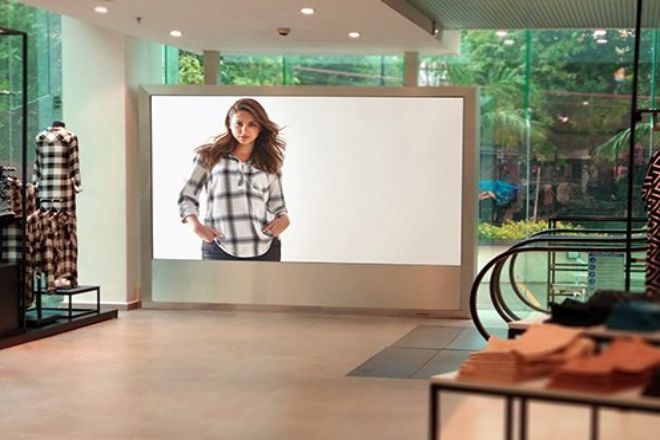
1). Misunderstanding explanation
There is a prejudice in society that LED display screens are mainly suitable for large-scale applications such as outdoor advertising and large-scale sports events due to their large size and relatively high cost, and are not suitable for use in small or indoor occasions.
2). Diversified products
In order to break this misunderstanding, we need to show the diversified characteristics of LED display screen products. In fact, LED displays have developed a variety of specifications and series from micro to giant to meet the application of different scenarios and needs:
Micro LED display: This display is small, light and easy to carry, very suitable for indoor display, desktop decoration or small advertising.
Standard size LED display: Suitable for medium-sized spaces such as conference rooms, exhibition halls, and retail stores, which can provide sufficient visual impact without taking up too much space.
Giant LED display: Of course, for large-scale events such as outdoor advertising and sports events, giant LED displays are still indispensable display devices.
3). Indoor application
The application of LED display on indoor occasions is also extensive and innovative:
Conference room: A high-definition LED display can be used as the background wall or main screen of the conference room to display PPT, video, and other content and enhance the professionalism and viewing of the meeting.
Home theater: With the growth of home entertainment demand, LED displays have also begun to enter the field of home theater. Its excellent picture quality and color expression can bring a more shocking viewing experience to the audience.
Retail store: In retail stores, LED display can be used to display product information, promotional activities and other content to attract customers’ attention and enhance the shopping experience.
4). Personalized customization
In addition to the diverse product specifications, LED display screens can also be customized according to the specific needs of customers:
Shape customization: According to the installation environment or design requirements, LED display screens can be customized into various shapes such as round, curved, and special shapes to better integrate into the surrounding environment or highlight the design features.
Size customization: Whether it is a small desktop display or a large wall installation, the LED display screen can be customized according to the specific size requirements of the customer.
Resolution customization: In order to meet the picture quality requirements in different application scenarios, the resolution of the LED display screen can also be customized. High-resolution display screens can provide more delicate and clear picture effects.
Conclusion
Looking back at the full text, it is not difficult to find that the LED display screen is not as “unattainable” or “perfect” as people imagine. It has its unique advantages and highlights, and it also faces constant technical challenges and innovation needs.
Through the analysis and discussion of this article, we hope to provide the public with a more comprehensive, objective, and in-depth understanding of the LED display screen perspective and promote the healthy development and wide application of this technology.
Finally, if you want to know more about LED display screens, please get in touch with us.
